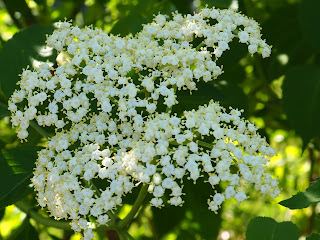The US Department of Agriculture (USDA) defines an invasive species as one that is "
non-native (or alien) to the ecosystem under consideration; and whose introduction causes or is likely to cause economic or
ecological harm or harm to human health." Invasive species have been introduced from other countries (both intentionally and accidentally) over the past few centuries, often as a result of global shipping and the ornamental plant trade.
As the definition suggests, not all introduced species display the aggressive tendencies characteristic of invasive plants. One cannot impulsively categorize all non-native plants as "bad" and all natives as "good." Some non-native species can become integrated into the ecosystem, but invasive species are non-natives that threaten biodiversity.
Many invasive plants spread vigorously with their root systems, produce large amounts of seed, form dense colonies of growth, and even have chemicals in their leaves and root systems that inhibit the growth of surrounding plants. They can form a monoculture and adapt to disturbed or degraded environments. They have few natural pests or diseases because they evolved in other environments. They successfully outcompete native plants for sunlight, nutrients, moisture, and room to expand. According to the USDA, invasive plant species are partly responsible for the decline of 42% of endangered and threatened species in the US.
Here at the preserve, we have been working to control several invasive species: garlic mustard, Japanese knotweed, hedge bindweed, porcelain berry, and multiflora rose. Removing invasives is an ongoing process, but cutting and painting invasive plant stems with a small amount of herbicide helps to control their spread. While most invasives cannot be fully eradicated, our efforts help to free up space at the preserve for milkweed, joe pye weed, and other native plants.
Finding and applying herbicide to porcelain berry
Porcelain berry (Ampelopsis brevipendunculata) was introduced in the 1870's from East Asia as an ornamental groundcover. Its purple and blue berries drew horticulturalists but its invasive tendencies, once discovered, did not become something to admire. Porcelain berry tolerates a variety of conditions, including both shade and direct sun, poor and rich soil, and dry and moist environments. The plant's vigorous root system gives it a competitive advantage. Its twisting vines grow over 25 feet long to choke out the growth of even shrubs and small trees.
 |
Porcelain berry's leaves are highly variable
but look similar to grape leaves |
 |
Removing porcelain berry wrapped
around a shrub |
 |
| Mission accomplished! |
Also introduced as an ornamental, Japanese knotweed (Fallopia japonica) can regenerate from tiny fragments of root and stem material, up to 1 meter deep in the soil. Its rapid root system spread and successful vegetative reproduction make it difficult to eradicate.
 |
Check out the previous post to learn about ragged robin
and herb Robert, in the same family as Japanese
knotweed (and also considered invasive in some states)
|
Garlic mustard (Allaria petiolata) releases compounds from its roots that inhibit the growth of surrounding plants. It diminishes the populations of mycorrhizal fungi in the soil to achieve competitive dominance. It also seeds profusely, so we tried to remove the plants before the formation of the oblong seed pods. Garlic mustard is an edible plant and was, interestingly, introduced by Europeans as a food source.
 |
Before: Look closely to see the four petalled white
flowers in this colony of garlic mustard |
 |
| Pulling up garlic mustard plants |
 |
| After: Garlic mustard successfully removed! |
The next invasive plants update will concern our efforts to remove multiflora rose and hedge bindweed.












Comments
Post a Comment